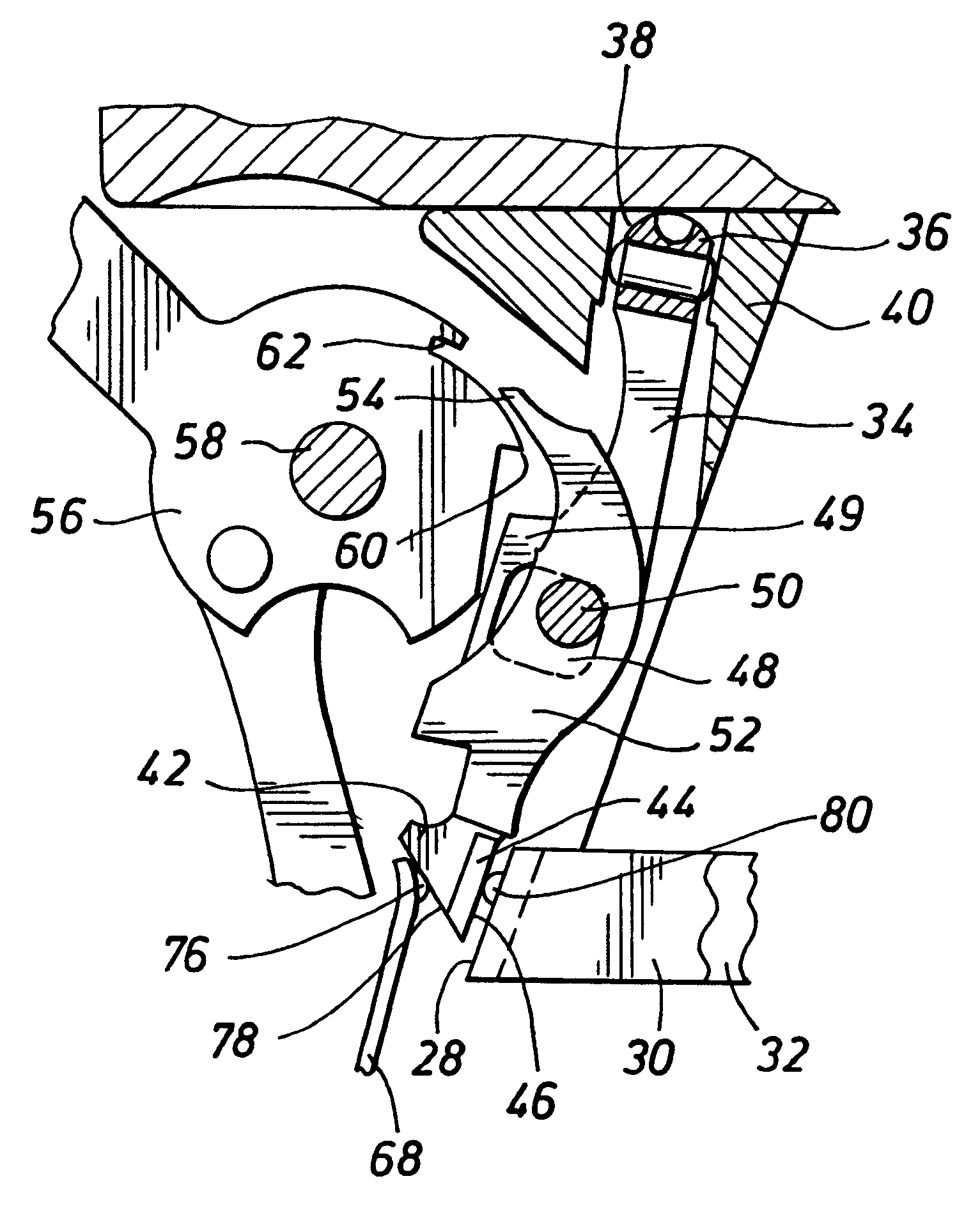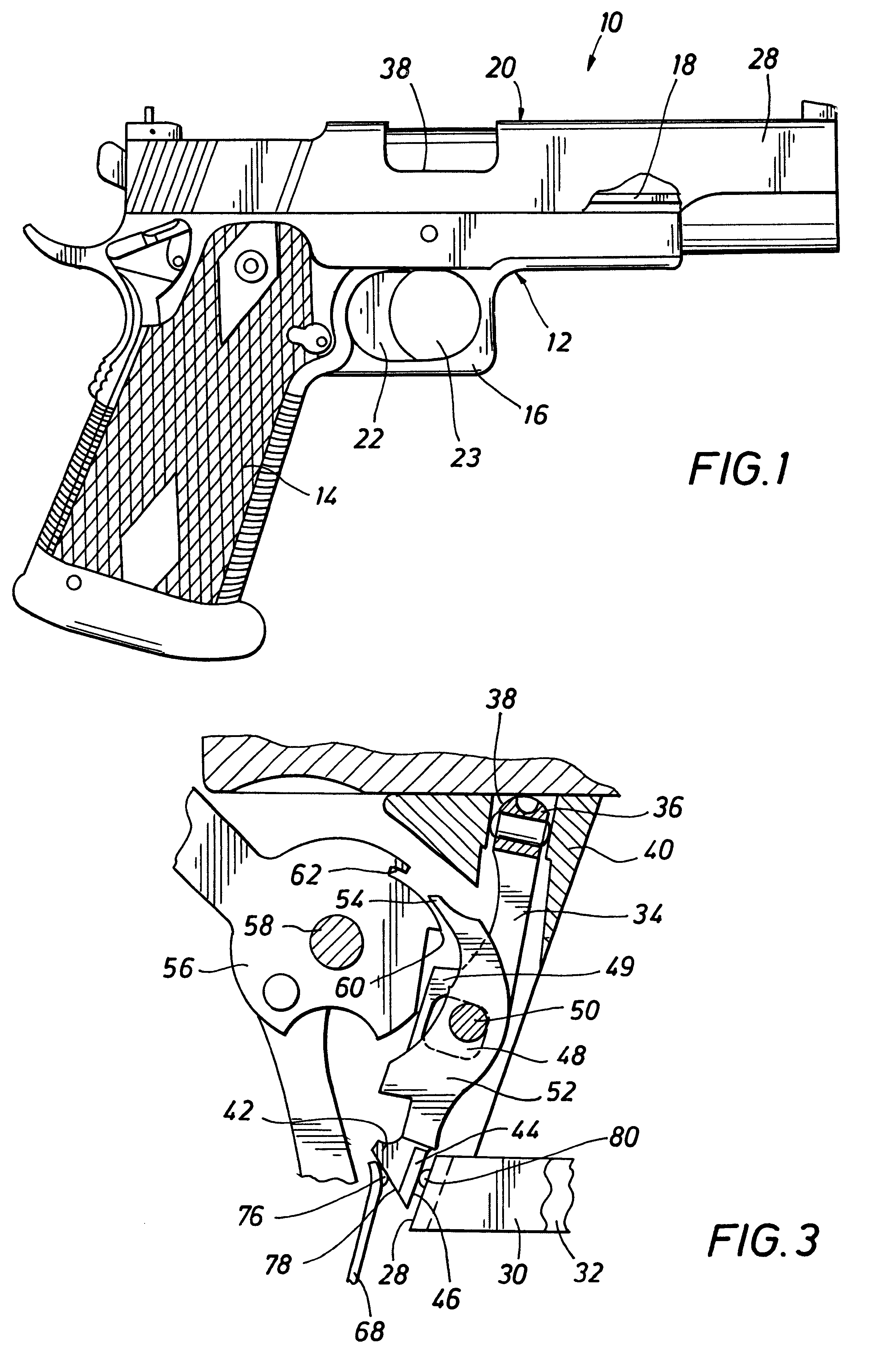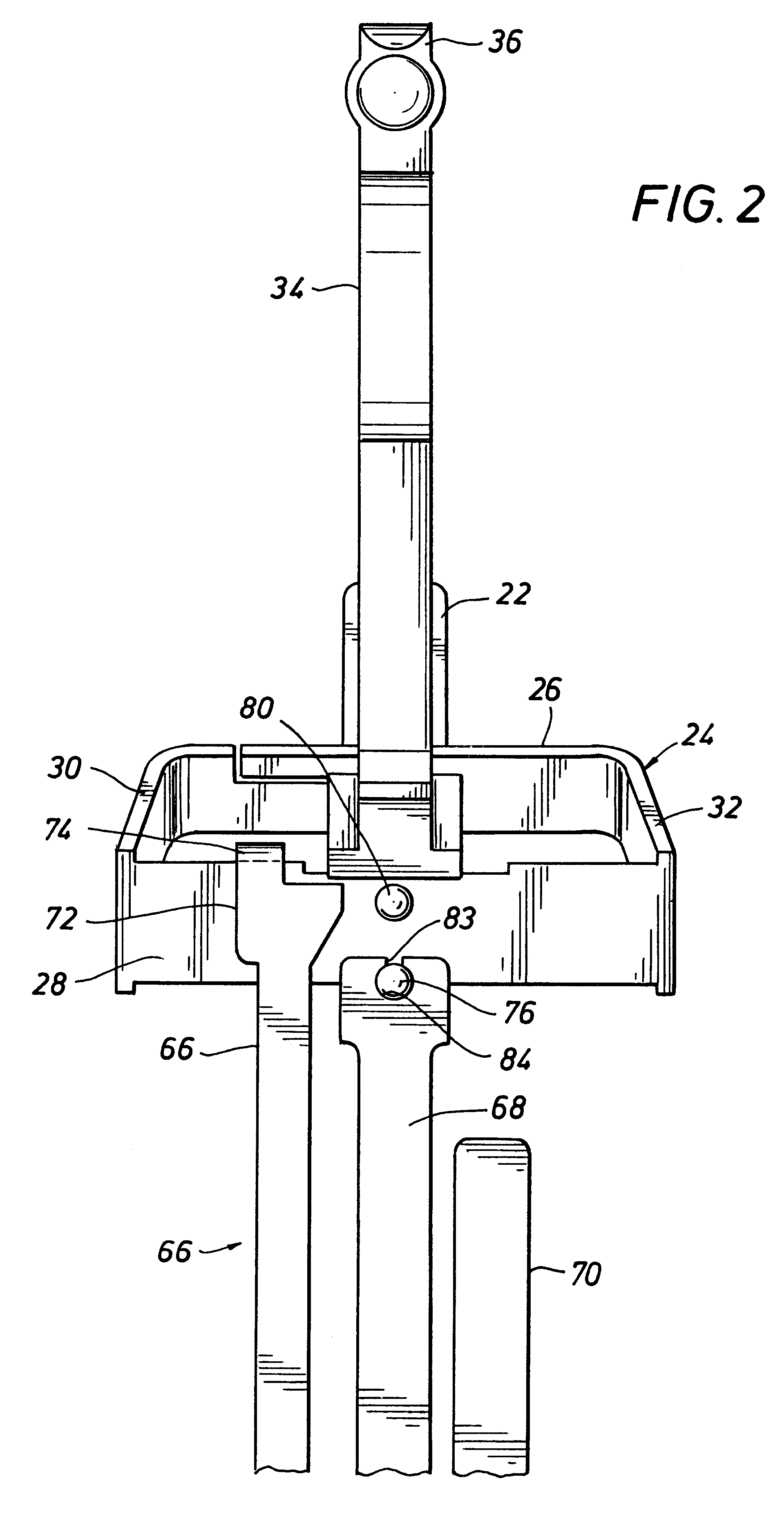Sear and sear spring assembly for semiautomatic handguns
a semi-automatic and spring technology, applied in the field of semi-automatic handguns, can solve the problems of inaccurate shooting and trigger creep
- Summary
- Abstract
- Description
- Claims
- Application Information
AI Technical Summary
Benefits of technology
Problems solved by technology
Method used
Image
Examples
Embodiment Construction
Referring now to the drawings and first to FIG. 1, a 191A1 Government Model type handgun, which is manufactured according to the principles of the present invention and represents the preferred embodiment of the invention, is shown generally at 10 and comprises a frame structure shown generally at 12 having a handgrip 14 and a trigger guard 16. The upper portion of the frame structure defines guide rails, a portion of which being shown at 18. A slide assembly, shown generally at 20 defines internal opposed guide grooves which receive the guide rails 18 and establish a guided reciprocating relation between the slide assembly and the frame of the handgun. The slide assembly 20 is generally constructed according to the principles of a conventional 1911A1 Government Model type handgun and generally incorporates the internal mechanically operable components thereof.
The handgun frame 12 defines a trigger slot opening to the trigger guard 16 and a trigger assembly is movably located within...
PUM
 Login to View More
Login to View More Abstract
Description
Claims
Application Information
 Login to View More
Login to View More - R&D
- Intellectual Property
- Life Sciences
- Materials
- Tech Scout
- Unparalleled Data Quality
- Higher Quality Content
- 60% Fewer Hallucinations
Browse by: Latest US Patents, China's latest patents, Technical Efficacy Thesaurus, Application Domain, Technology Topic, Popular Technical Reports.
© 2025 PatSnap. All rights reserved.Legal|Privacy policy|Modern Slavery Act Transparency Statement|Sitemap|About US| Contact US: help@patsnap.com



